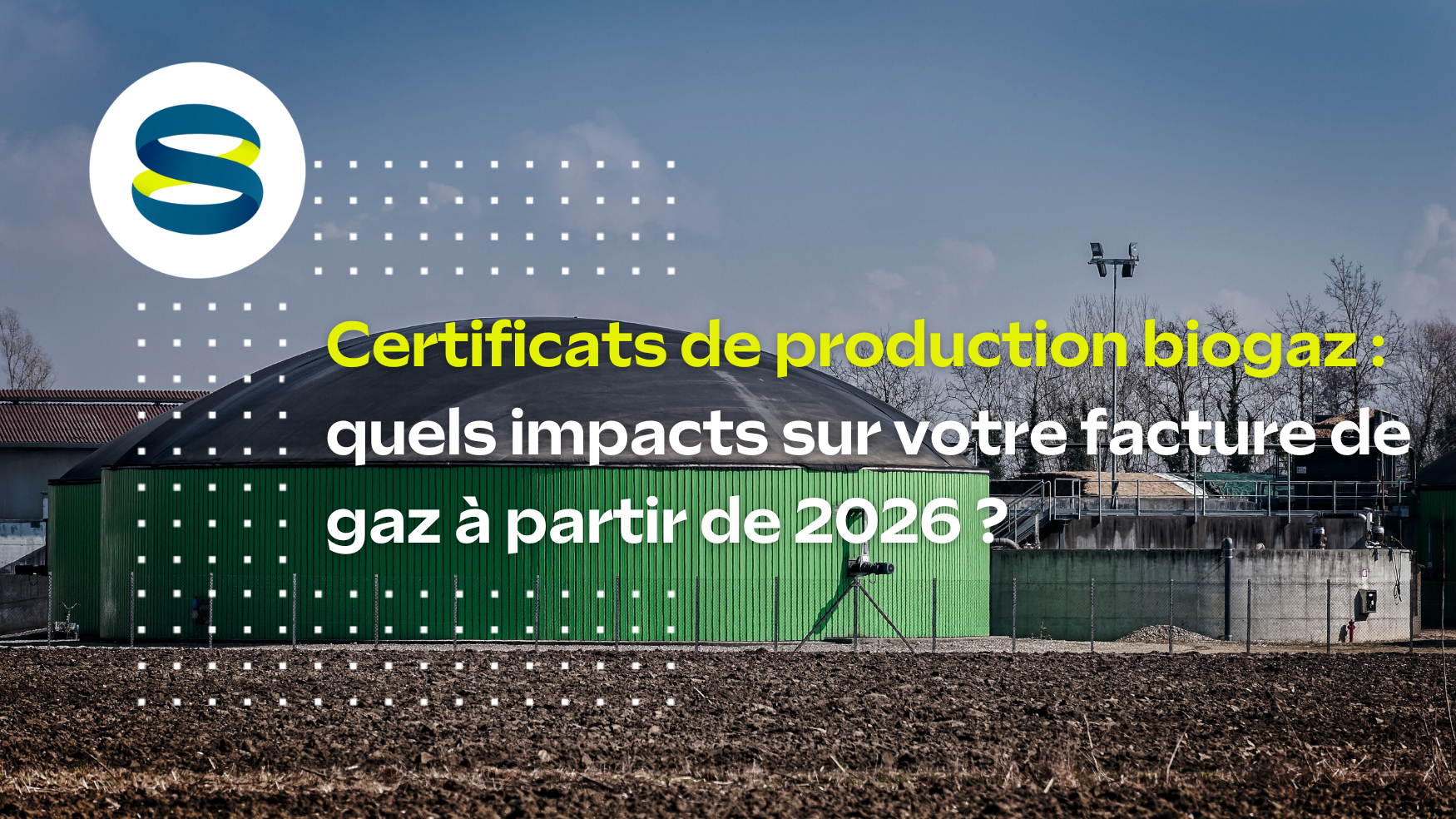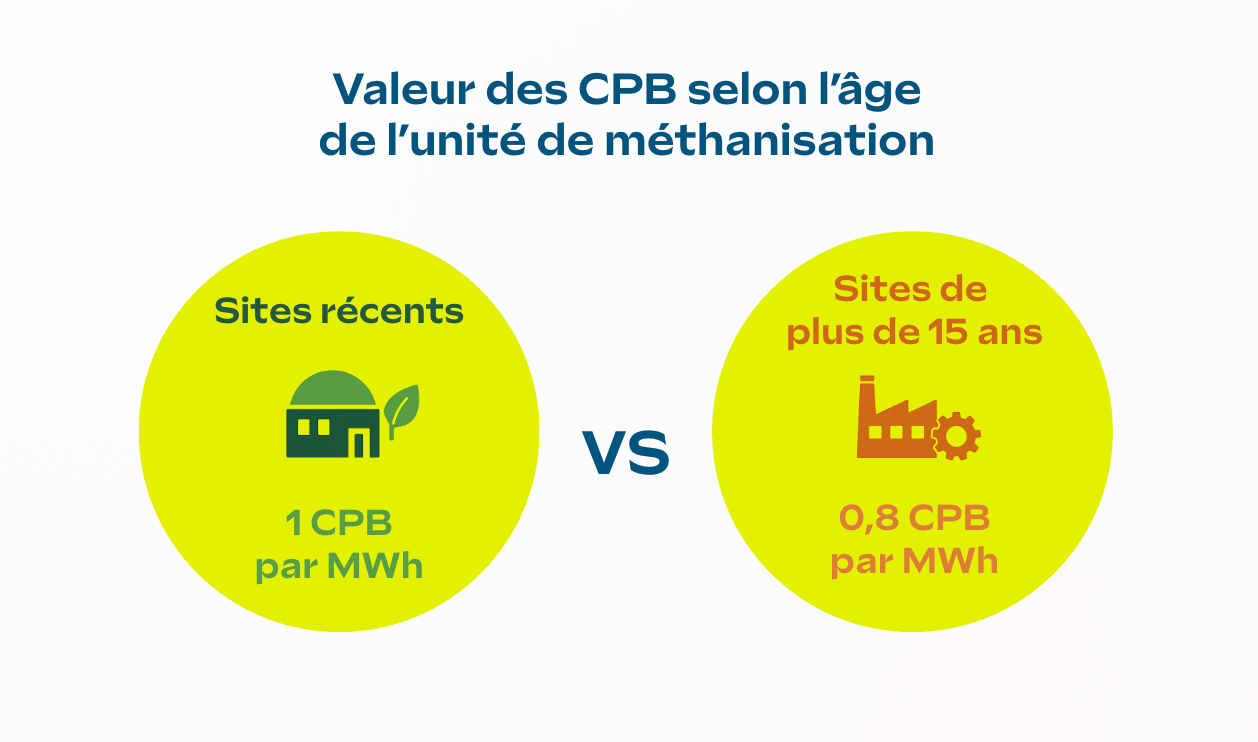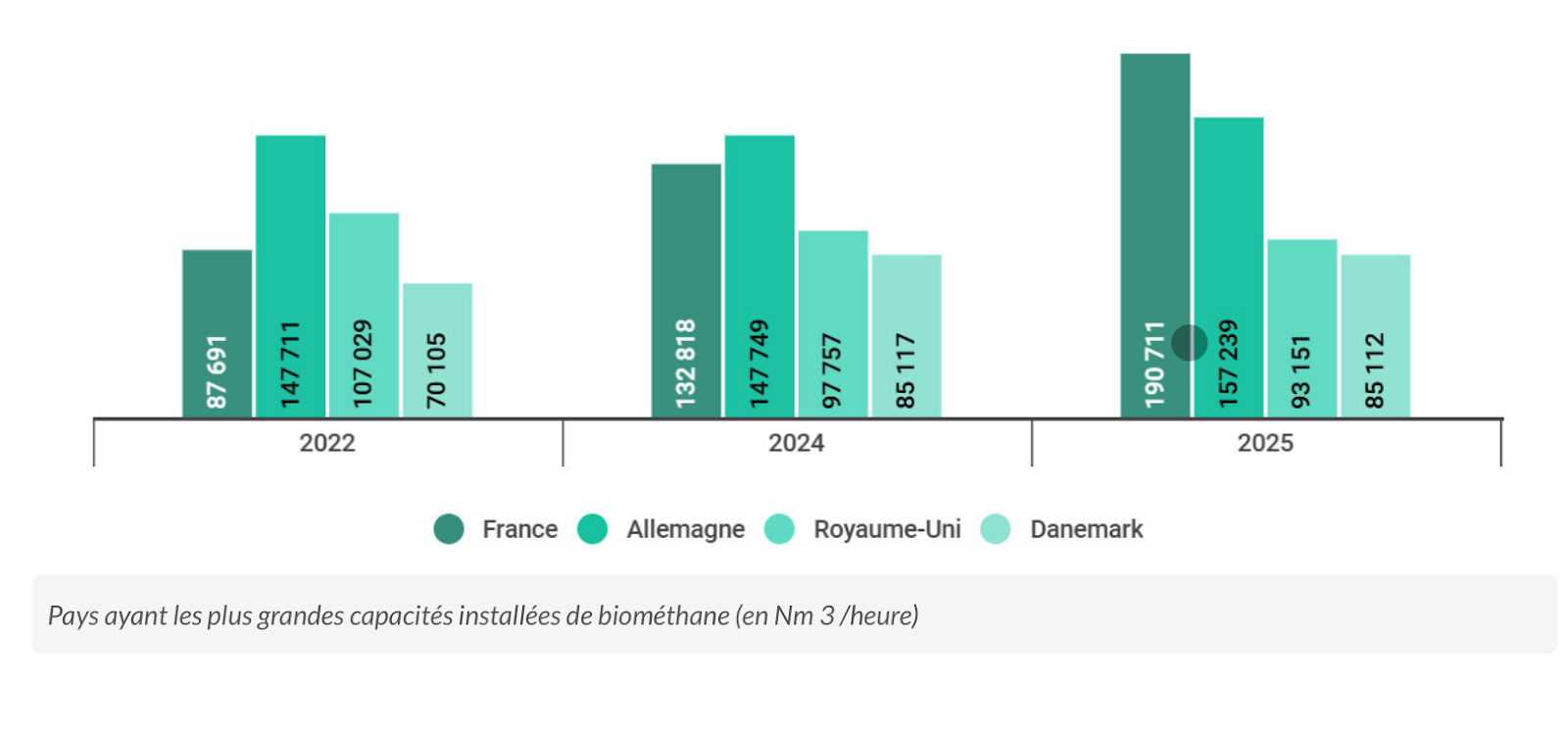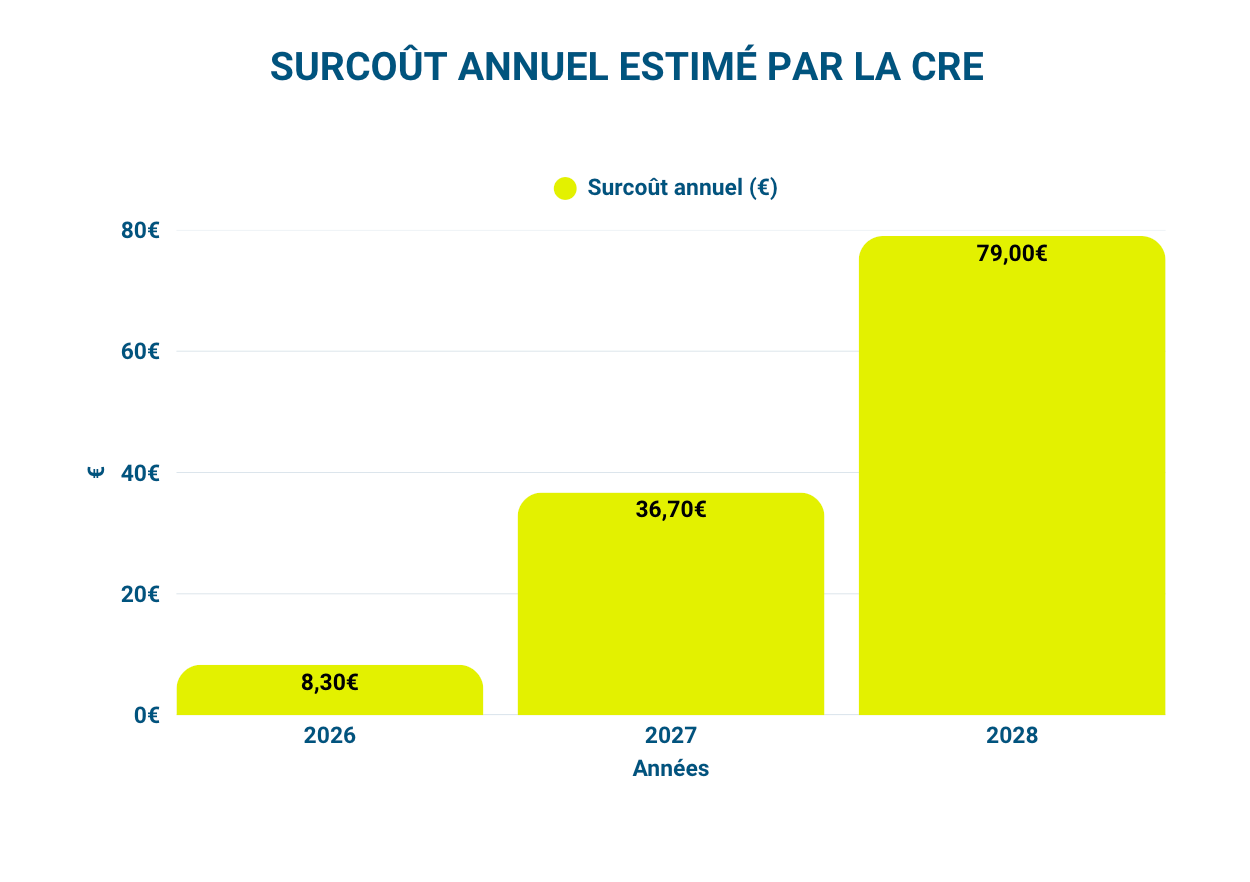

September 11, 2025
6
Min reading

The 1Er January 2026 marks a key date in the financing of the methanization sector in France, with the entry into force of the Biogas Production Certificates (CPB) system.
This reform is part of France's energy transition strategy. The objective? Gradually increase the share of biomethane in national gas consumption, in order to achieve the ambition of decarbonization in 2050.
Ce extra-budgetary financing mechanism relies on natural gas suppliers, with a predictable impact of the CPB price on consumer bills.
How do Biogas Production Certificates (CPB) work? How to anticipate their impact on your 2026 energy budget? Deciphering this new regulatory obligation.
Created by article 95 of the Climate and Resilience Law of August 2021, the mechanism of Biogas Production Certificates (CPB) was specified by two decrees, published on April 25, 2022 and July 6, 2024.
Its entry into force in 2026 transformed the financing model for the anaerobic digestion sector in France.
Biogas Production Certificates are inspired by a well-known device: Energy Saving Certificates (CEE).
Obligatory actors — in this case gas suppliers — must justify each year to the State that a portion of their customers' consumption is covered by biomethane injected into the network.
In practice, this results in theobligation to acquire and return Biogas Production Certificates. The quantity of CPB to be presented by a supplier varies according to the volume of gas delivered each year to its customers.
Vendors can obtain certificates in two ways:
Until now, gas suppliers were hesitant to buy biomethane. Why? Because its purchase price is more than triple that of natural gas.
By requiring suppliers to buy Biogas Production Certificates, the State intends to reverse the trend and Give a boost to the methanization sector.
By guaranteeing regular income, the reassuring financial framework of CPBs should encourage biogas producers to increase production and to invest in new facilities.
The device also makes it possible to Sustaining old methanization sites, who no longer benefit from the open window and the purchase contract guaranteed by the State.
This mechanism should also benefit new large installations.
CPBs do not represent not the same value depending on energy performance of the methanization unit. Les recent production sites are preferred, with 1 CPB per MWh. The figure is lowered to 0.8 CPB per MWh for sites over 15 years old.

CPBs: an energy transition tool
Biomethane is one of the bets made by France to achieve carbon neutrality in 2050 and strengthen its energy sovereignty. Local, renewable and low-carbon energy, biomethane reduced greenhouse gas emissions by 80% compared to fossil natural gas.
With over 700 methanization plants, France became the European leader in the sector in 2025, ahead of Germany.

La Multiannual Energy Programming (PPE)) 2019-2028 sets a production target of 24 to 32 TWH in 2028, including 14 to 22 TWH of biomethane injected into the networks.
The Biogas Production Certificates (CPB) system comes into force on 1Er January 2026 for a first period of time until December 31, 2028.
Its implementation is gradual, in order to allow time for the actors concerned to adapt.
To facilitate the transition to CPBs and mitigate the financial shock, the State followed the recommendations of the Energy Regulatory Commission (CRE).
So, the level of reimbursement of CPB increases progressively each year :
The management of the CPB register was entrusted to the European energy exchange (EEX) (European Energy Exchange), under state control.
In 2026, only suppliers delivering more than 400 GWh of gas per year are affected by Biogas Production Certificates. The obligation will be extended in stages, with the thresholds being lowered to 300 GWh in 2027 and to 200 GWh in 2028.
It should also be noted that only residential and tertiary consumption are taken into account in calculating the annual number of CPBs that a supplier must acquire.
As for CEEs, the cost of the Biogas Production Certificate is determined by the law of the market of supply and demand. According to CRE estimates in 2023, its price could reach around 80 euros per MWh PCS in 2026.
In comparison, in the event of non-compliance with these new obligations, a gas supplier is exposed to financial penalty of 100 euros per missing certificate.
The gradual implementation of Biogas Production Certificates (CPB) is transforming both the economic model of the methanization sector and the gas pricing structure for consumers.
Biogas Production Certificates stabilize the methanization sector. They offer biogas producers:
The Biogas Production Certificate system is a so-called “extra-budgetary” financing. This means that, while it is initiated by the State and framed by the Energy Code, it is not financed by the public budget.
The cost of supporting methanization is borne by energy suppliers and, ultimately, consumers. Passed on to invoices, the price of CPB leads to Increase in the gas budget.
`

In its deliberation of December 2023, the CRE estimated the annual additional cost at 8.3 euros in 2026, 36.7 euros in 2027 and 79 euros in 2028, for an average consumer (14 MWh/year).
Did you know that?
To avoid rising gas bills, optimize your energy consumption with Sirenergies.
Via The Pilott app, you can follow and parse your consumption, identify the most energy-consuming items and build tailor-made energy solutions with our experts.
To conclude...
The arrival of Biogas Production Certificates (CPB) reflects France's resolute commitment to decarbonization. This incentive system aims to progressively green the gas consumed by the French, while actively supporting the methanization sector. But beyond this environmental objective, CPBs also embody a change of model in energy financing: public support gives way to financing supported by suppliers and, ultimately, consumers. While the announced additional costs remain modest, it once again reveals the tensions between energy transition and purchasing power. The long-term bet? That the decrease in dependence on imported fossil fuels stabilize energy prices and guarantee a more predictable and better controlled gas bill.

.png)

Tertiary companies must manage their energy costs while guaranteeing the comfort of users (offices, shops, services). Consumption is often linked to heating, air conditioning and lighting, which requires precise monitoring to avoid budgetary excesses.
.png)

Among the taxes include TICFE, TICGN, CTA, CJA and TURPE. They represent a significant part of the bill and vary according to consumption profiles. Understanding them well is essential to optimize costs.
.png)

Farms are subject to taxes such as TICFE or TICGN. Sirenergies verifies their application, identifies cases of exemption and accompanies the procedures to reduce the tax burden.
.png)

One invoice consists of several elements: consumption, supplier share, taxes and contributions. The analysis of each line makes it possible to identify possible errors and to check the consistency with the signed contract.
.png)

Sourcing offers better visibility on the market and promotes the selection of competitive contracts. It helps to reduce the risks associated with price volatility and to optimize the energy budget.
.png)

This makes it possible to choose the right time to contract, secure your budgets and anticipate increases.
.png)

The €/MWh is a price unit used in wholesale markets, while kWh is the unit visible on your bills.
.png)

The subscribed power must be calculated according to the consumption profile and uses (heating, industrial processes, tertiary equipment). One fine analysis makes it possible to ensure the adequacy between real need and contract.


.png)

One invoice consists of several elements: consumption, supplier share, taxes and contributions. The analysis of each line makes it possible to identify possible errors and to check the consistency with the signed contract.
.png)

Pilott cross-references consumer data and contracts to identify billing anomalies. Users are alerted in case of discrepancies, which makes it possible to quickly correct and avoid additional costs.
.png)

It generates a budget forecast per delivery point, by comparing your actual consumption with your bills.
.png)

All businesses, from SMEs to large organizations, can benefit from this service. Les local authorities also find it a lever to better control their budgets.
.png)

This feature combines all contracts and invoices in a single interface. Users can check the consistency between consumptions actual and billing, which makes it easier to track and limit errors.
.png)

Use the category filters in the section: Gas, Electricity, Green Energy, Environment, budget, Energy market to target relevant topics.